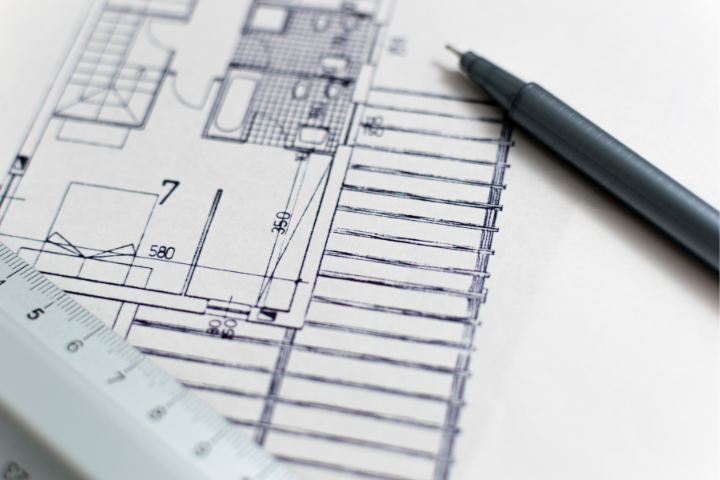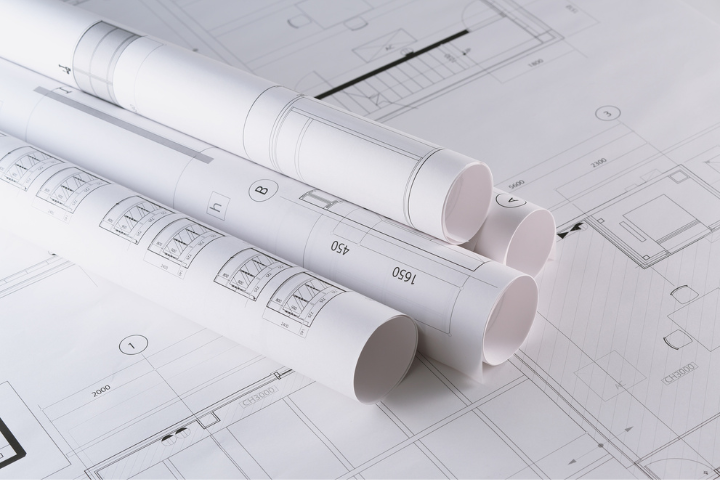Architects are creators. They bring ideas to life through design, structure, and vision. Unfortunately, being a great architect is not enough. To grow, you also need to attract the right clients.
That’s where inbound marketing plays a key role. And with limited time and resources, many architects are now hiring virtual marketing assistants to help manage their inbound marketing. This article explains how inbound marketing works for architects; why it matters, and how a virtual assistant can help you reach more clients without adding to your workload.

What Is Inbound Marketing for Architects?
Inbound marketing focuses on drawing clients to you, rather than chasing them. It uses helpful content, SEO (search engine optimization), social media, email, and your website to attract people who are already looking for design help. It works best when your content answers fundamental questions that clients ask.
For example, someone might search for “how to design a modern eco-friendly home”. If your firm has a blog post on that topic, it can bring that person to your website. That’s an inbound lead. According to HubSpot, inbound leads cost 61% less than outbound leads. And 72% of marketers say that content marketing increases engagement and leads. These numbers show how inbound marketing can be a powerful tool, even for small architecture firms.
Why Architects Struggle with Marketing
Most architects do not have time to create blog content, optimize websites, or post on social media. They are busy with design, client meetings, permits, and project management. Many firms do not have in-house marketers, and hiring a full-time employee is expensive.
Also, marketing is not always taught in architecture school. As a result, many firms either ignore the concept or rely on word-of-mouth. That works to a point; however, it limits growth. With the rise of online search, clients now look for architects on Google, Pinterest, Instagram, and LinkedIn. Firms that do not show up there miss out.

How a Virtual Assistant Can Support Your Inbound Marketing
A virtual assistant (VA) is a remote worker who can help with marketing tasks, often at a lower cost than a full-time employee. Many VAs specialize in digital marketing and have experience with architecture or design content. Here are key areas where a virtual assistant can help:
Blogging and Content Creation
Blogging is one of the most effective tools in inbound marketing. It helps your website rank on Google and builds trust with potential clients. However, writing takes time and skill. A virtual assistant can research topics for your inbound marketing efforts, write drafts, format posts, and upload them to your site.
For example, blogs like “5 Mistakes to Avoid in Your First Renovation” or “Choosing the Right Materials for a Small Urban Home” can attract traffic and show your expertise. The American Institute of Architects says that 84% of clients look at a firm’s website before making contact. A virtual marketing assistant ensures that your site has fresh, relevant content.
Search Engine Optimization (SEO)
Your site needs to appear in search results when clients look for architects in your area. This requires keyword research, optimizing page titles, updating meta descriptions, and improving load speed. A virtual assistant trained in SEO can handle these tasks.
They can also update your images with tags and compress files to speed up the site. Analytical tools such as SEMrush, Ahrefs, or Google Search Console can help track progress. With a VA managing these tools, your site performance can improve steadily.
Social Media Management
Social media plays a significant role in how architecture firms build their brand. Platforms like Instagram and Pinterest are visual and ideal for showing your work. However, consistency matters. A VA can plan your posts, schedule them, and even reply to comments. They can use tools such as Buffer or Hootsuite, or any of the other social media scheduling tools, to manage everything.
By posting project photos, behind-the-scenes shots, or tips, you stay visible and build trust. A report from the Royal Institute of British Architects found that 43% of clients use social media to evaluate a firm’s style and tone before reaching out. A strong social media presence makes a real difference.
Email Marketing
A VA can also manage email newsletters. These keep past clients informed and remind leads that your firm is active. Emails can share new blog posts, awards, project updates, or helpful guides. Email marketing has one of the highest returns.
According to Campaign Monitor, every $1 spent on email generates an average of $36 in return. For architects, a well-timed email can bring in a new project or keep your network warm.
Lead Management
A virtual assistant can help track leads that come in through your website. VAs can respond to inquiries, qualify leads, and set up appointments. A VA can even create a simple CRM (customer relationship management) system using tools such as Trello or Notion. This ensures that no lead gets lost, and you can focus on closing deals or preparing proposals.

Benefits of Hiring a Virtual Assistant
Hiring a virtual assistant offers clear advantages
- Cost-Effective: You only pay for the time or tasks you need. A skilled VA from countries such as the Philippines or South Africa may charge $8–$15 an hour.
- Flexible: Scale up during busy seasons and scale down when needed.
- Specialized Skills: Many VAs already have marketing experience and need little training.
- Time-Saving: You can focus on your core design work while the VA handles content, SEO, or emails.
One architecture firm in Austin, Texas, reported a 60% increase in web traffic six months after hiring a part-time VA to handle blog content and Pinterest marketing. The owner said, “I finally had time to design again, and our inbox was filling with qualified leads.”
Challenges and What to Watch Out For
Not all virtual assistants will be the right fit. Some VAs may lack the design knowledge needed to create meaningful content for an architecture firm. You need to vet carefully. Start with a trial project. Ask for writing samples or case studies. Set clear expectations.
Tools like Loom, Slack, and Google Docs help with remote collaboration. Also, you should monitor results. Look at traffic, engagement, and leads. A VA should bring value, not simply complete tasks.
Final Thoughts: Inbound Marketing for Architects
Inbound marketing is no longer optional for architecture firms that want to grow. Clients search online, look for value, and choose firms based on trust and visibility. Creating content, staying active on social media, and ranking in search engines help you stand out. But you do not have to do it alone.
A virtual assistant can manage your inbound marketing tasks, save you time, and help you grow your business. If you want to focus more on design and less on marketing, it might be time to hire a VA. It is an innovative, scalable way to stay visible and to build long-term success.
Take Your Architecture Firm to the Next Level
Stop letting marketing hold you back from focusing on what you do best—designing extraordinary spaces. Hire a virtual marketing assistant today to manage your inbound marketing, create engaging content, and attract qualified clients without adding to your workload.
✅ Save time and focus on design
✅ Increase your online visibility and leads
✅ Access specialized marketing skills at a fraction of the cost
Book a free consultation today and discover how a skilled virtual assistant can transform your firm’s marketing, freeing you to create while your business grows.
How can a virtual marketing assistant improve my architecture firm’s online visibility?
A virtual marketing assistant can increase your architecture firm’s online visibility by managing key inbound marketing activities such as SEO, blogging, social media, and email campaigns. They optimize your website for relevant keywords like “modern eco-friendly home design” or “residential architect near me,” ensuring your firm appears higher in search results. According to HubSpot, inbound leads cost 61% less than outbound leads, showing that consistent, optimized content drives cost-effective traffic. By having a VA maintain fresh content and engage with social media followers, architects can attract more qualified leads without adding extra workload.
What tasks can a virtual assistant handle for architecture inbound marketing?
A virtual assistant can take over repetitive and time-consuming marketing tasks, allowing architects to focus on design work. This includes blog research and writing, SEO optimization, social media posting, email newsletter management, and lead tracking. For example, a VA can create blog posts like “5 Mistakes to Avoid in Your First Renovation” or manage Pinterest boards that showcase completed projects, attracting potential clients. According to the American Institute of Architects, 84% of clients check a firm’s website before making contact, so having a VA ensure your content is relevant and engaging can directly influence client acquisition.
How do I choose the right virtual assistant for my architecture firm?
Selecting the right VA requires evaluating both marketing skills and industry knowledge. Look for assistants with experience in digital marketing, content creation, and social media, preferably with some familiarity with architecture or design. Start with a trial project and ask for writing samples or case studies that demonstrate measurable results. Use collaboration tools like Slack, Loom, and Google Docs to monitor performance and provide feedback. Hiring a skilled VA can save you time, improve lead management, and allow your firm to grow its online presence efficiently.

